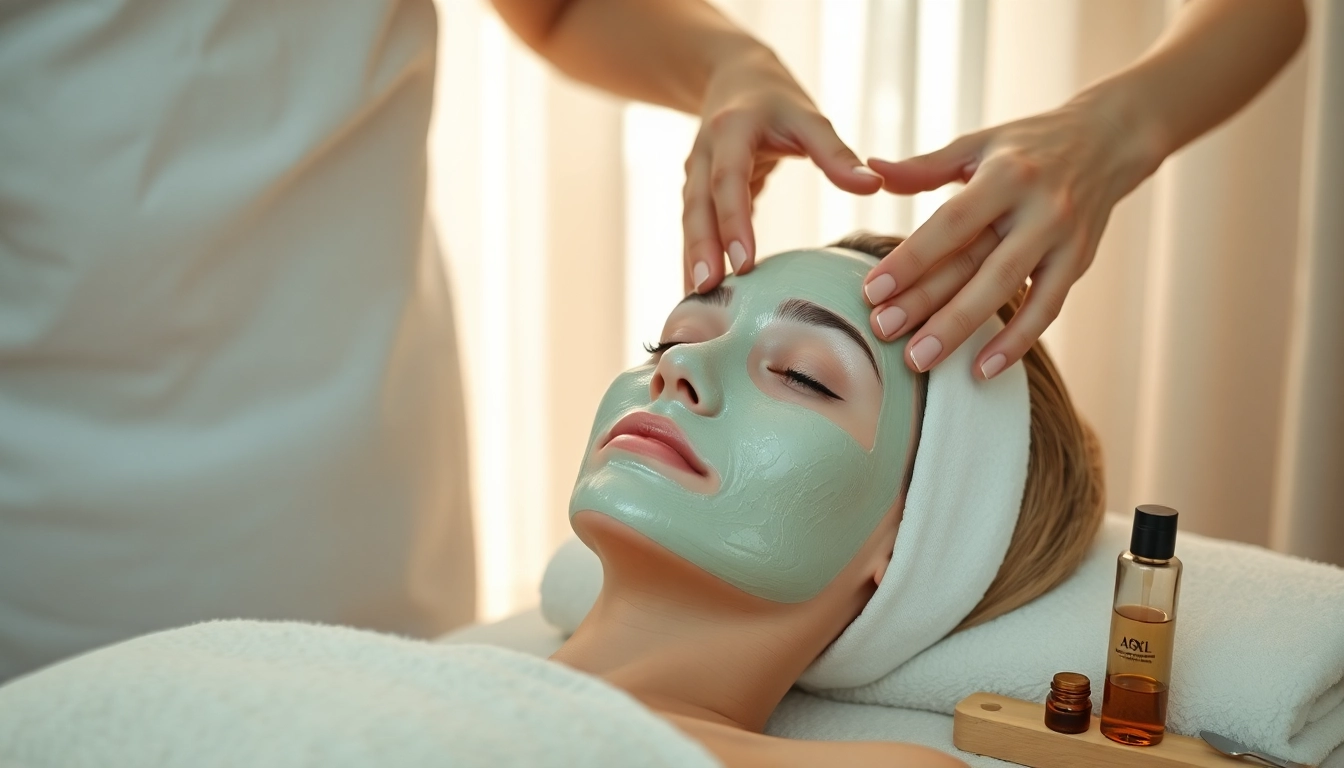Introduction to Anti-Aging Spa Treatments
In today’s fast-paced world, where stress and environmental factors can take a toll on our skin, the pursuit of youthful, radiant skin has led many individuals to seek out anti-aging spa treatments. These treatments are designed not only to rejuvenate the skin but also to restore confidence and enhance overall wellness. Understanding the necessity and benefits of these treatments is essential for making informed decisions about skincare.
Understanding the Need for Anti-Aging Care
As we age, our skin naturally undergoes various changes. Factors such as decreased collagen production, loss of elasticity, and environmental aggressors like UV exposure contribute to the formation of wrinkles, fine lines, and uneven skin tone. These challenges motivate many to embrace anti-aging care as a proactive measure to maintain their skin’s health and vitality. Effective anti-aging treatments aim to counteract these signs of aging, offering tailored solutions that respond to individual skin concerns.
Overview of Common Types of Anti-Aging Spa Treatments
Numerous anti-aging treatment options are available, which can be categorized into facial treatments, non-invasive procedures, and advanced skincare products. Each option incorporates varying techniques, ingredients, and technologies, enabling a personalized approach to anti-aging care. Understanding these categories helps clients to identify which treatment may suit them best, given their unique skincare goals.
Benefits of Regular Anti-Aging Treatments
Engaging in regular anti-aging treatments offers a multitude of benefits that extend beyond mere aesthetics. These treatments can enhance skin texture, promote hydration, improve circulation, and stimulate collagen production, leading to a more vibrant and youthful appearance. Furthermore, they can offer psychological benefits, such as increased self-esteem and reduced stress, contributing to overall well-being and quality of life.
Popular Anti-Aging Techniques
Facial Treatments: Techniques and Benefits
Facial treatments remain a cornerstone of anti-aging spa therapies. Popular techniques include:
- Microdermabrasion: This non-invasive procedure uses a specialized device to gently exfoliate the skin, removing dead cells and encouraging cellular turnover. Microdermabrasion can reduce the appearance of fine lines, improve skin texture, and enhance absorption of skincare products.
- Chemical Peels: These treatments involve applying a solution that gently removes the outer layer of skin, revealing smoother, less damaged skin underneath. Chemical peels can effectively address concerns such as pigmentation, uneven texture, and wrinkles.
- Hydrafacial: A popular choice for its immediate results, this treatment combines cleansing, exfoliation, extraction, and hydration in one session. It infuses the skin with antioxidants and peptides, promoting a healthy glow.
Each of these facial techniques serves to refresh the skin, addressing various aging signs and promoting a youthful appearance.
Non-Invasive Procedures: What to Expect
For individuals seeking more pronounced results without the need for invasive surgery, several non-invasive procedures are available. These options often utilize advanced technologies:
- Laser Therapy: Utilizes targeted light beams to stimulate collagen production and reduce pigmentation. Different types of laser treatments can be used to address a variety of skin concerns.
- Ultrasound Therapy: This technique uses sound waves to promote skin tightness and lift. It penetrates deep layers of skin, offering a non-surgical facelift effect.
- Radiofrequency Treatments: This procedure delivers energy to stimulate collagen production, effective in tightening and rejuvenating the skin.
Patients can expect little to no downtime with these non-invasive options, making them popular among busy individuals seeking effective anti-aging solutions.
Advanced Skincare Products Used in Spa Settings
Many spas utilize a range of advanced skincare products specifically designed to enhance the effects of treatment. Key ingredients often include:
- Retinoids: Known for their powerful anti-aging properties, retinoids promote cell turnover and boost collagen production.
- Peptides: These compounds help to stimulate collagen and elastin, improving skin texture and elasticity.
- Hyaluronic Acid: A superstar ingredient in hydrating products, it attracts moisture and keeps skin plump and youthful.
- Antioxidants: Ingredients like vitamin C and E help combat free radicals and environmental damage, crucial for maintaining healthy skin.
The combination of professional treatments and these potent skincare products can yield significant improvements in skin health and appearance.
Choosing the Right Anti-Aging Treatment
Identifying Your Skin Type and Concerns
Understanding your specific skin type—whether it is oily, dry, combination, or sensitive—is paramount when selecting anti-aging treatments. Moreover, identifying any particular skin concerns, such as hyperpigmentation, fine lines, or loss of firmness, helps prioritize treatment options. Having an in-depth skin analysis performed by a skilled esthetician can provide valuable insights to guide your choices.
Consultation Process: What to Discuss with Your Esthetician
A consultation with your esthetician is vital for a successful anti-aging treatment plan. During this discussion, it is essential to cover:
- Your specific concerns: Be clear about what you hope to achieve from treatments, whether it’s diminishing wrinkles, improving skin texture, or achieving an overall youthful glow.
- Your skincare history: Include information on previous treatments, allergies, or sensitivities to ensure appropriate product selection and treatment modalities.
- Lifestyle factors: Discuss aspects like diet, stress level, and skincare routine—all of which can influence your skin’s health and treatment outcomes.
This dialogue not only determines the best treatment approach but also builds trust between you and your esthetician, fostering a collaborative skincare journey.
Assessing Treatment Options for Different Age Groups
Age plays a significant role in determining the most suitable anti-aging treatments. Younger individuals in their 20s may benefit from preventative treatments such as facials and light peels, focusing on maintaining their skin’s health. Those in their 30s and 40s might explore more intensive options, including microdermabrasion or laser treatments, to address visible signs of aging. Individuals in their 50s and beyond may need tailored solutions that significantly enhance skin texture and elasticity, like ultrasound or RF therapy.
Aftercare and Longevity of Results
Essential Aftercare Practices Post-Treatment
Proper aftercare is crucial for maximizing the benefits of anti-aging treatments. Recommended practices include:
- Hydration: Keeping the skin well-hydrated post-treatment helps maintain elasticity and plumpness.
- Sun Protection: Applying broad-spectrum sunscreen daily is essential to protect delicate skin and prevent further damage.
- Avoiding Irritation: Steer clear of harsh products or exfoliants for several days post-treatment to allow the skin to heal effectively.
By adhering to these guidelines, clients can enhance their treatment effects and prolong results.
How to Maintain Results at Home
To ensure the longevity of results, integrating a robust at-home skincare routine is paramount. Key practices include:
- Regular exfoliation: Utilizing gentle exfoliants can help maintain skin turnover, keeping the complexion radiant.
- Daily moisturizing: Opt for moisturizers that hydrate and nourish the skin, tailored to your skin type and concerns.
- Consistent use of anti-aging products: Incorporating serums and targeted treatments into your daily regimen can help address specific aging signs.
These at-home practices can complement spa treatments, contributing to sustained skin health over time.
Signs That Indicate You Need a Follow-Up Treatment
Over time, skin can revert to showing signs of aging. Recognizing when it may be time for a follow-up treatment is key. Signs to be aware of include:
- Visible fine lines or wrinkles returning
- A dull, uneven skin tone
- Decreased firmness, with sagging skin becoming noticeable
Scheduling follow-up treatments as these signs emerge can help maintain optimal skin health and appearance.
Future Trends in Anti-Aging Spa Treatments
Emerging Technologies and Innovations
The domain of anti-aging treatments is ever-evolving, with research and technological advancements paving the way for innovative therapies. Emerging trends include:
- AI and Personalized Treatments: The rise of artificial intelligence may facilitate tailoring treatment plans based on individual skin analysis and concerns.
- Regenerative Medicine: Advances such as platelet-rich plasma (PRP) therapy show promise in harnessing the body’s natural healing processes to rejuvenate the skin.
- Smart Skincare Devices: The introduction of at-home devices that emulate professional treatments enhances skincare accessibility and encourages consistent maintenance.
Such innovations provide exciting opportunities for clients to explore more effective and personalized anti-aging treatments.
Holistic Approaches Gaining Popularity
Many people are now gravitating towards holistic anti-aging solutions that focus on overall wellness. Integrating practices such as:
- Meditation and stress management: Recognized for their positive effects on skin health.
- Healthy eating: Nutrient-rich diets that focus on antioxidants and hydration impact skin aging.
- Physical activity: Exercise promotes circulation, delivering vital nutrients and fostering overall skin vitality.
These holistic approaches can be incredibly beneficial in conjunction with traditional anti-aging spa treatments.
Personalizing Anti-Aging Treatments for Best Outcomes
Personalization is the future of anti-aging care. As clients become more knowledgeable, they seek treatments uniquely tailored to their skin type, concerns, and lifestyle factors. This could include:
- Customized product formulations based on individual skin analysis
- Flexible treatment plans that adjust according to skin’s response
- Incorporating lifestyle changes into treatment strategies for comprehensive care
By emphasizing personalization, spas can enhance results, ensuring clients receive the most effective and satisfying outcomes for their skincare needs.



